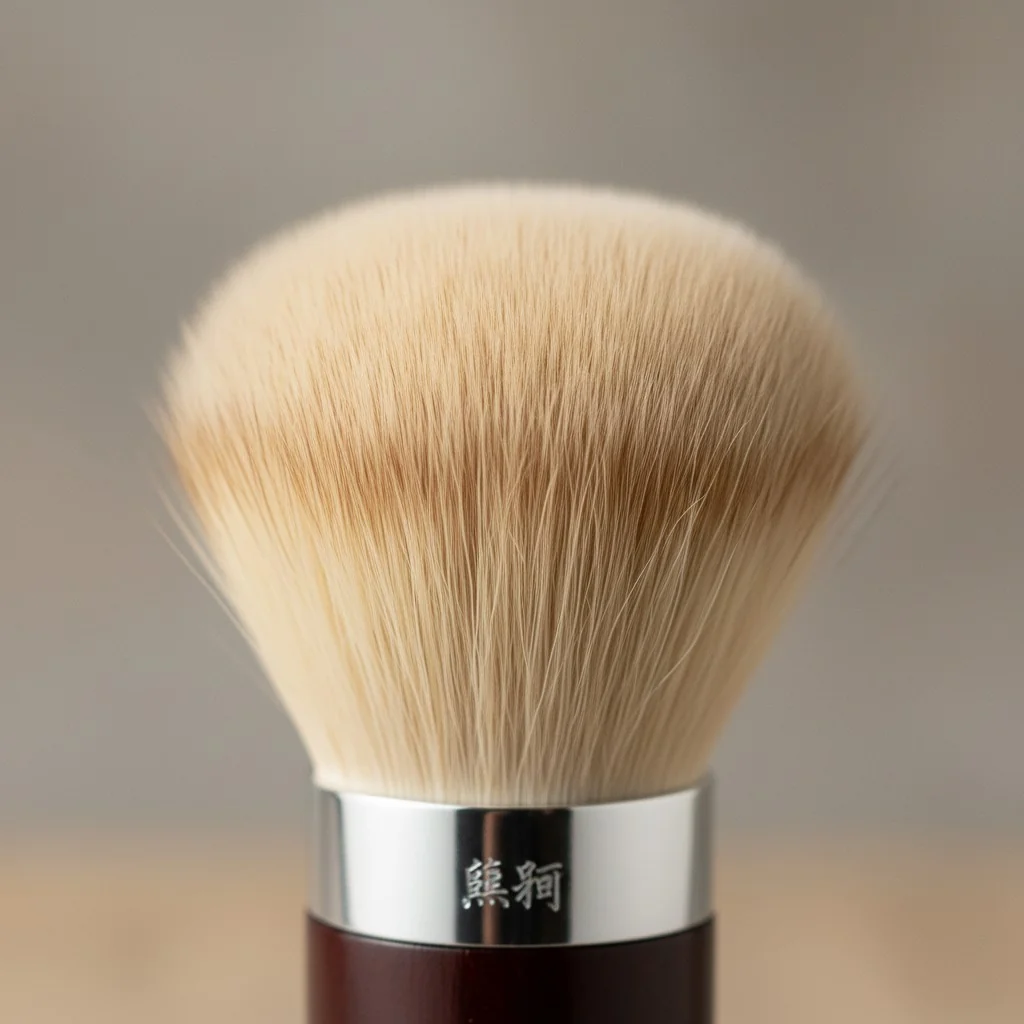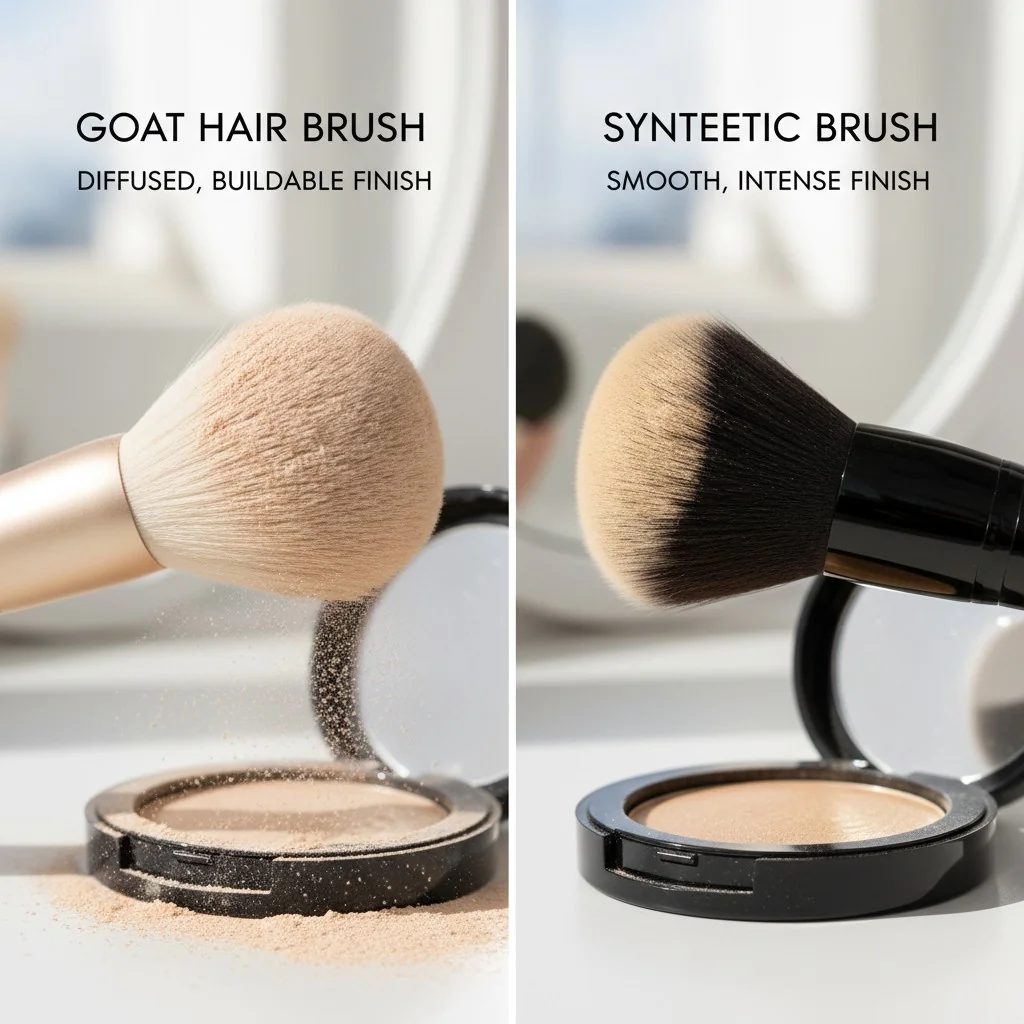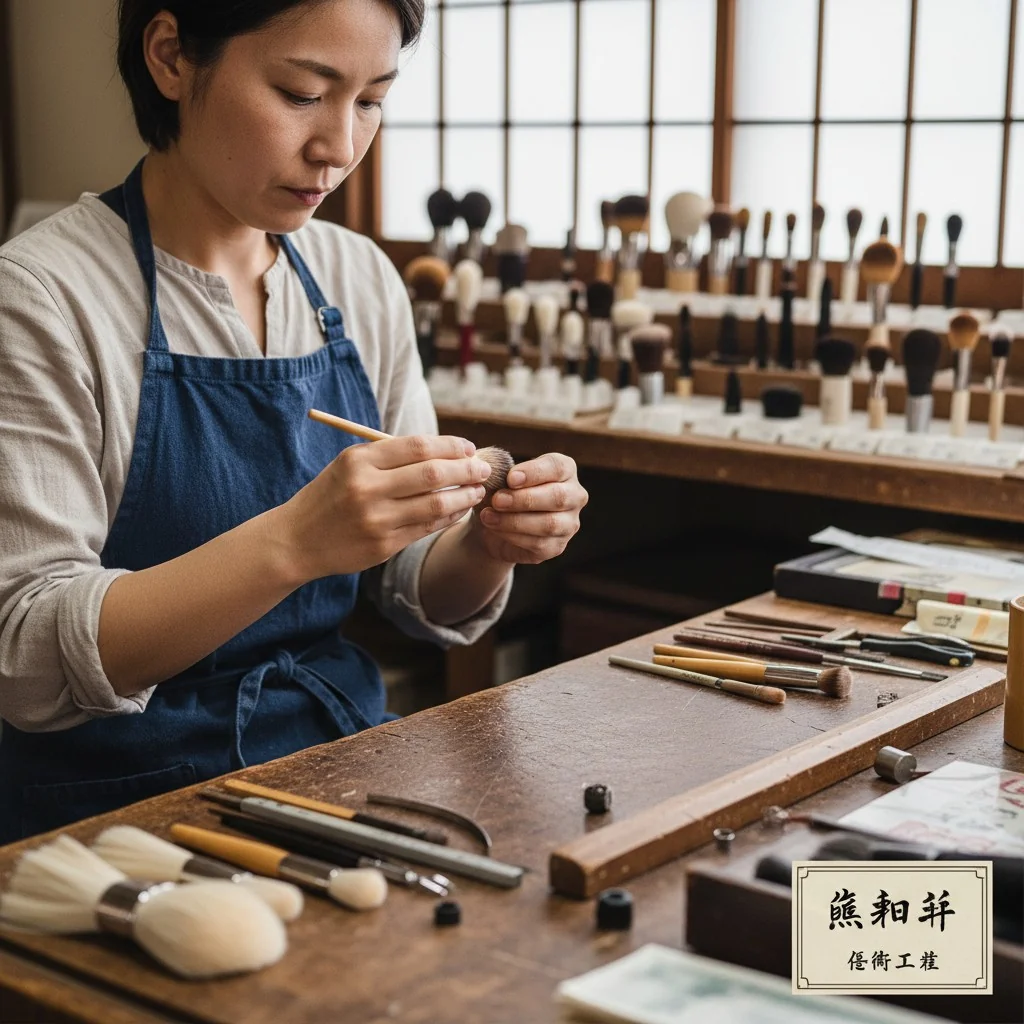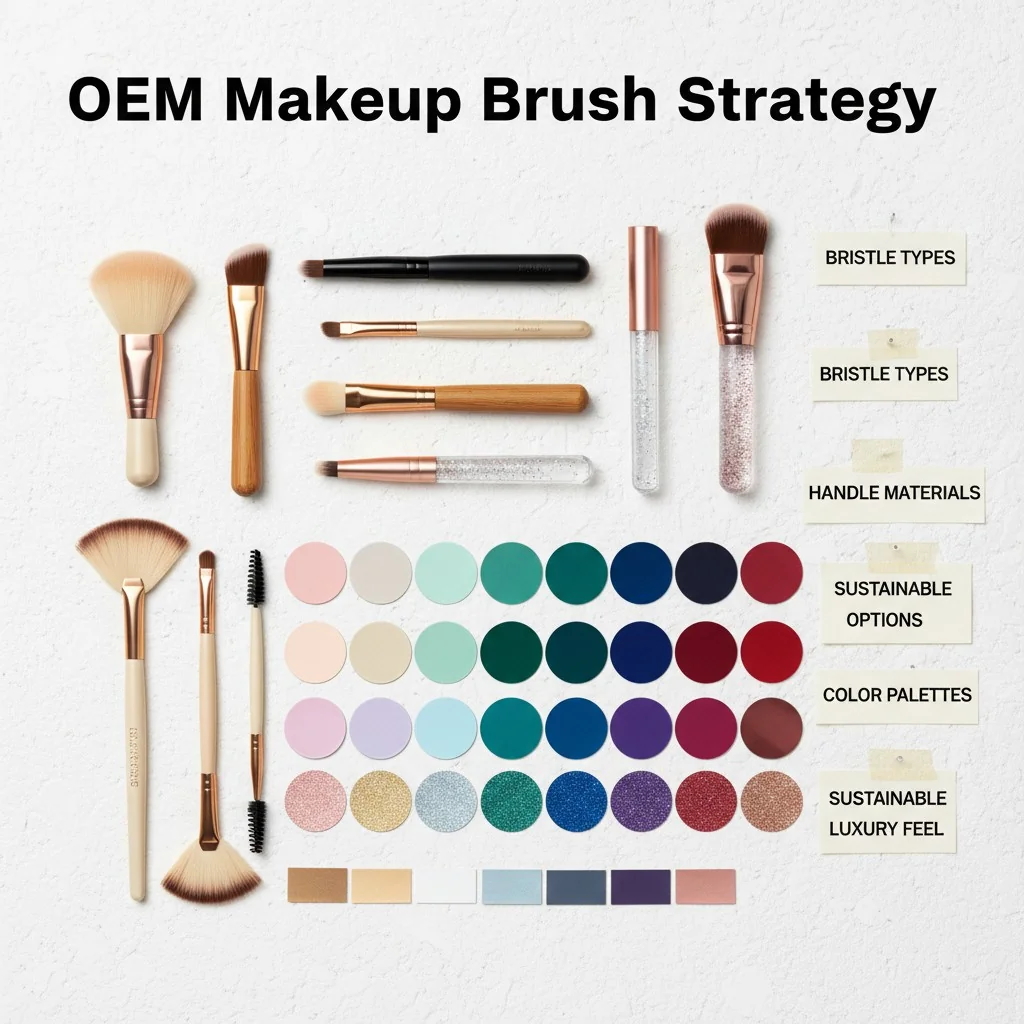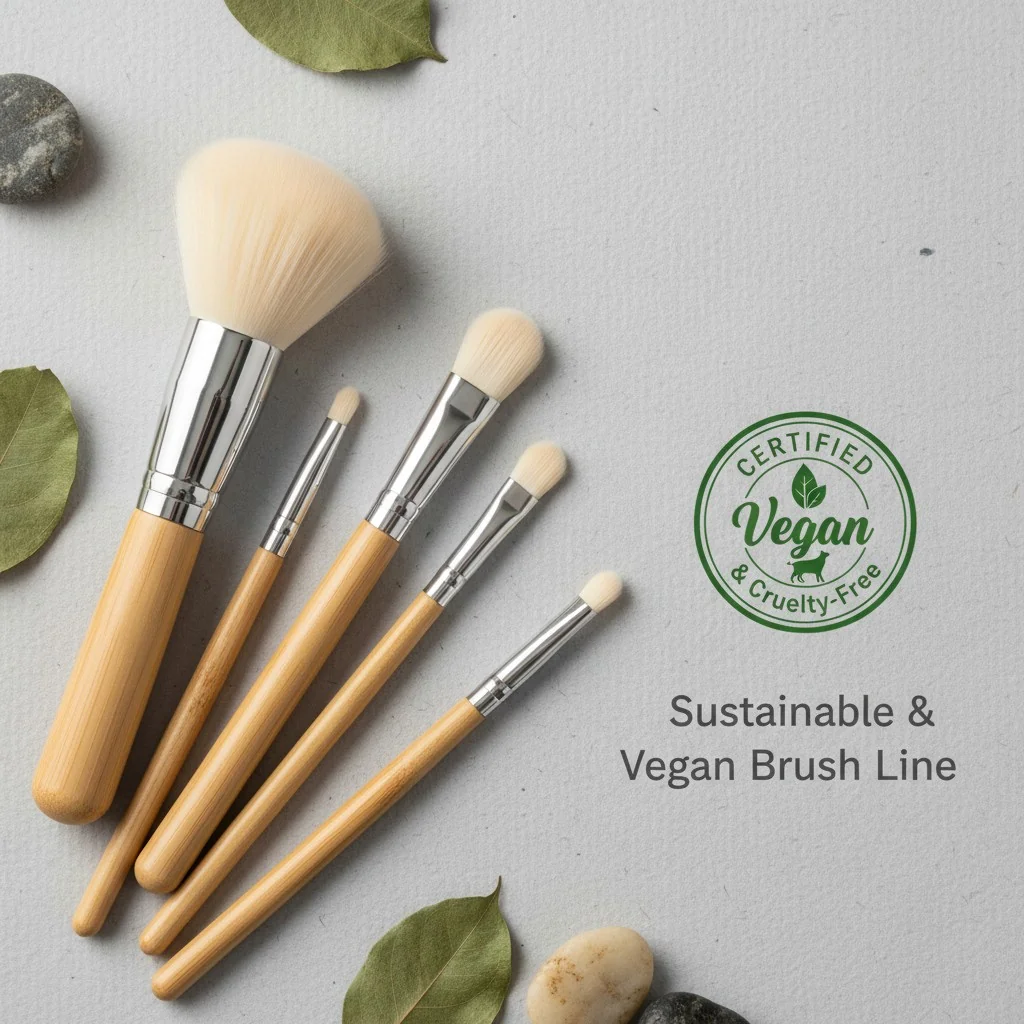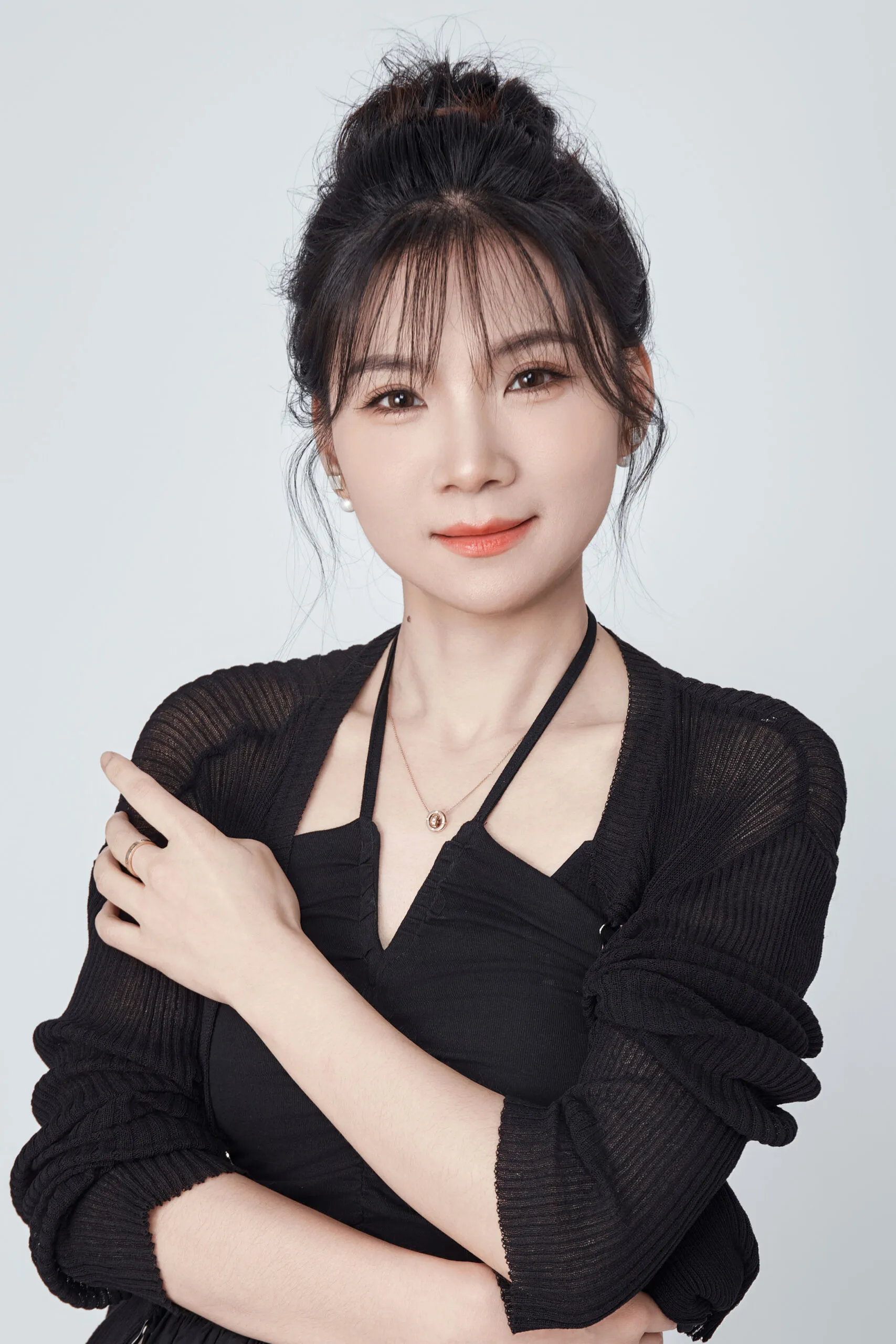Choosing the right makeup brush feels complicated. The wrong choice can hurt your product’s performance and your brand’s reputation. This guide makes the decision simple and strategic for you.
Japanese cosmetic brushes1 differ by hair type and shaping. For powders, squirrel hair gives a soft, sheer finish, while goat offers stronger pickup. For liquids and creams, synthetic fibers are best. Precision work often uses water badger or weasel. Artisans preserve uncut hair tips for smoother glide.
When I first walked through a brush factory floor years ago, I saw brushes as just tools. But then I visited Kumano2 and saw an artisan spend hours shaping a single brush head without a single cut. It changed everything for me. I realized that a brush isn’t just a tool; it’s a critical part of the user experience. For brand founders like you, understanding these differences is not just about quality—it’s about delivering on your brand promise from the very first touch. Let’s explore what really matters.
All Japanese makeup brushes are made from squirrel hair.False
Japanese brushes use a wide variety of hairs, including goat, horse, weasel, and synthetics, each chosen for a specific purpose.
The term 'keshōfude' is the Japanese name for cosmetic brushes.True
Keshōfude (化粧筆) literally translates to 'cosmetic brush' and refers to these high-quality, often handcrafted tools.
How Does Brush Hair Material Control Your Makeup’s Finish?
Choosing a brush based on "softness" alone is a common mistake. This can lead to poor application and wasted product. Here’s how to match the hair type3 to your desired makeup finish.
natural hairs4 like blue squirrel and goat are perfect for powders, giving finishes from sheer to intense. Their natural cuticles pick up product well. Synthetics are best for liquids and creams because their non-absorbent fibers don’t soak up the formula, ensuring a smooth laydown.
The material of your brush head is the single most important factor for performance. It’s not just about how it feels on the skin; it’s about how the hair itself interacts with your makeup formula. Natural hairs have cuticles, like scales on a fish, that grab onto powder particles. synthetic fibers5 are smooth, which is why they work so well with creams and liquids—they don’t absorb the product. Understanding this basic science helps you move from guessing to making strategic choices for your brand’s SKUs. I’ve seen brands fail simply because they paired a beautiful liquid foundation with the wrong brush type.
Hair Type vs. Use-Case Matrix
| Hair Type | Best Formulas | Pickup | Finish | Softness | Durability | Typical SKUs |
|---|---|---|---|---|---|---|
| Blue Squirrel | Powder | Sheer | Natural, diffused | Ultra-soft | Delicate | Finishing, highlighting |
| Goat (Saikoho) | Powder | Medium-Strong | Blended, buildable | Very Soft | Resilient | Powder, blush, bronzer |
| Horse | Powder | Strong | Intense color | Soft | Durable | Eyeshadow, blush |
| Weasel | Cream, Liquid, Powder | Precise | Defined lines | Soft but firm | Very Resilient | Eyeliner, lipstick, concealer |
| Synthetic | Liquid, Cream | Controlled | Smooth, even | Varies | Very Durable | Foundation, concealer, cream blush |
| Water Badger | Powder, Pomade | Firm | Sharp, defined | Firm | Very Durable | Eyebrows |
Synthetic brushes are always less soft than natural hair brushes.False
Modern synthetic fiber technology has advanced significantly, and high-end synthetic brushes can be engineered to feel as soft as, or even softer than, some natural hair grades.
Goat hair is prized for its excellent balance of softness, resilience, and powder pickup.True
Goat hair, especially high grades like Saikoho, is a versatile workhorse in Japanese brush making, ideal for a wide range of powder applications.
What Makes Kumano Brushes and Their "Uncut Tips" So Special?
You’ve probably heard that Japanese brushes feel more luxurious. It’s not a myth, but a specific crafting method. Let’s uncover the secret that separates them from mass-produced tools.
Artisans in Kumano, Japan, shape brush heads by hand, carefully bundling hairs to preserve their natural, uncut tips6. This meticulous process, which can take over 80 steps, creates a perfectly shaped brush with unparalleled softness, smooth glide, and even product application without irritating the skin.
Most machine-made brushes are made from a bundle of hair that is then cut into the desired shape. This creates sharp, blunt ends that can feel scratchy and apply product unevenly. The Kumano method is the opposite. Artisans gather the hairs and meticulously tap and arrange them until the natural tips form the perfect shape—whether it’s a dome, a flat top, or a flame. This preserves the softest, finest part of the hair. I remember seeing this process, called seiho, and realizing it’s why these brushes glide like silk. This is the "Japanese feel" that justifies a premium price point and creates loyal customers for a brand.
The 80-Step Difference
- Uncut Tips: The key to the signature softness and flawless application. The natural taper of each hair is preserved, preventing micro-scratches on the skin and ensuring product is deposited smoothly.
- Hand Shaping: Instead of cutting, artisans use their hands and small tools to arrange each hair into its final shape. This ensures the brush functions exactly as intended.
- Scale and Craft: A factory like Hakuhodo can produce around 10,000 brushes a day by having its ~250 employees specialize in different stages of the ~80-step process. This blends artisanal quality with efficient production.
The 'uncut tips' in Japanese brushes are just a marketing term with no real benefit.False
Uncut tips are fundamental to the performance and feel of high-end Japanese brushes, providing a smoother glide and more even product laydown than machine-cut bristles.
The town of Kumano in Hiroshima prefecture produces over 80% of the makeup brushes made in Japan.True
Kumano is the historical and current center of fude (brush) making in Japan, with a deep heritage and a high concentration of master artisans and renowned manufacturers.
How Can You Match Brush Specs to Your OEM Strategy?
Sourcing brushes for your private label brand can feel overwhelming. Making the wrong choice on specs wastes time and money. This simple framework helps you brief your factory clearly and efficiently.
For your OEM strategy, first align the hair grade with your brand’s price point—for example, premium Saikoho goat7 versus cost-effective Sokoho. Then, match the brush shape and density to each specific SKU, like a dense, flat top for foundation or a fluffy dome for powder.
As a brand founder, every decision impacts your bottom line and brand perception. When you’re briefing a factory like mine, clarity is everything. Don’t just say you want a "soft powder brush." Specify the performance you need. Do you want a sheer wash of color or an intense payoff? This tells me whether we should consider squirrel or goat hair. Are you targeting a luxury market or an accessible one? This helps us choose between Saikoho and Sokoho goat grades. Thinking this way turns you from a client into a product developer. It’s how you build a cohesive, high-performing brush line that truly reflects your brand’s vision and meets your customers’ expectations.
Your OEM Decision Checklist
- Define the SKU’s Job: What product is this for (e.g., setting powder, cream blush, brow pomade)? What finish do you want (e.g., sheer, blended, sharp)?
- Select Hair by Function:
- Luxury Powder Finish: Blue Squirrel.
- Workhorse Powder/Blush: Goat (Saikoho for luxury, Sokoho for performance/value).
- Liquids/Creams: High-performance Synthetic.
- Detail/Liner: Weasel or firm Synthetic.
- Choose Grade and Density: This is where you balance cost and feel. A denser brush generally provides more coverage but costs more. A higher grade of hair (like Saikoho goat) is softer but also pricier than Sokoho.
- Confirm Your Claims: If you need a "Vegan" claim, your only choice is synthetic. "cruelty-free8" is more complex and requires transparent sourcing documentation, which you must request from your supplier.
Sokoho goat hair is a higher, more expensive grade than Saikoho goat hair.False
Saikoho is the higher grade, consisting of finer, softer, and more delicate hairs from a goat's neck and shoulder, making it more luxurious and expensive than the still-excellent Sokoho grade.
The density of a brush head directly impacts the intensity of product application.True
A densely packed brush picks up and deposits more product for a concentrated application, while a less dense, fluffier brush provides a sheerer, more diffused finish.
How Do You Build a Sustainable and High-Performance Brush Line?
Your customers demand vegan and cruelty-free products. But as a brand, you can’t afford to sacrifice performance. Here’s how to navigate the claims and build a responsible brush line.
For a 100% vegan line, use high-quality synthetic fibers, which also offer easy sanitation. For "cruelty-free" claims with natural hair, you must verify your supplier’s sourcing practices. Blended fibers are an emerging option to balance performance, cost, and ethical positioning.
This is a major pain point I see with brand founders. You want to do the right thing, but the terminology is confusing and some suppliers are not transparent. The safest and clearest path to an ethical claim is a fully synthetic line. Modern synthetics are incredible and can mimic the performance of many natural hairs. If you choose natural hair, you must ask your factory for documentation on sourcing. The term "cruelty-free" often refers to practices where animals are not harmed for the purpose of making brushes (e.g., hair is a byproduct of other industries). As a brand owner, it’s your responsibility to do your due diligence to ensure the claims you make on your packaging are true.
Materials Policy and Claim Options
| Fiber Type | Vegan? | Cruelty-Free Claim Notes | Care Difficulty | Typical Price Tier |
|---|---|---|---|---|
| Synthetic | Yes | Yes. Easiest claim to certify and defend. | Easy | $-$$$ |
| Goat/Horse | No | Complex. Hair is often a byproduct. Requires supplier transparency. | Medium | $$-$$$ |
| Squirrel/Weasel | No | Very complex. Sourcing is tightening. Hard to verify. | High | $$$-$$$$ |
| Blended Fibers | No | Depends on the blend. Transparency is key. | Medium | $$-$$$ |
All natural makeup brush hairs are sourced in a way that is cruel to animals.False
The 'cruelty-free' status of natural hair is complex. Many hairs, like goat and horse, are byproducts of the food or textile industries. However, brands must verify sourcing for each specific hair type to make an ethical claim.
Synthetic brushes are generally easier to clean and sanitize than natural hair brushes.True
Synthetic fibers are non-porous, so they don't absorb oils and pigments as deeply as natural hairs, making them quicker to clean, faster to dry, and more hygienic for pro use.
Conclusion
Choosing the right brush is about matching material, craft, and ethics to your brand’s vision. You now have the expert framework to source and develop your line with confidence.
References
-
Discover the unique craftsmanship and quality that make Japanese cosmetic brushes a favorite among makeup artists. ↩
-
Uncover the rich heritage of Kumano, the heart of Japanese brush craftsmanship. ↩
-
Learn how different hair types influence the performance and finish of makeup brushes. ↩
-
Explore the advantages of natural hairs in achieving various makeup finishes and applications. ↩
-
Find out why synthetic fibers are becoming increasingly popular for their performance and ethical considerations. ↩
-
Explore the significance of uncut tips in achieving a smoother application and better product performance. ↩
-
Discover the unique qualities of Saikoho goat hair that make it a top choice for luxury makeup brushes. ↩
-
Learn about the complexities of cruelty-free claims and how to navigate them in the beauty industry. ↩
